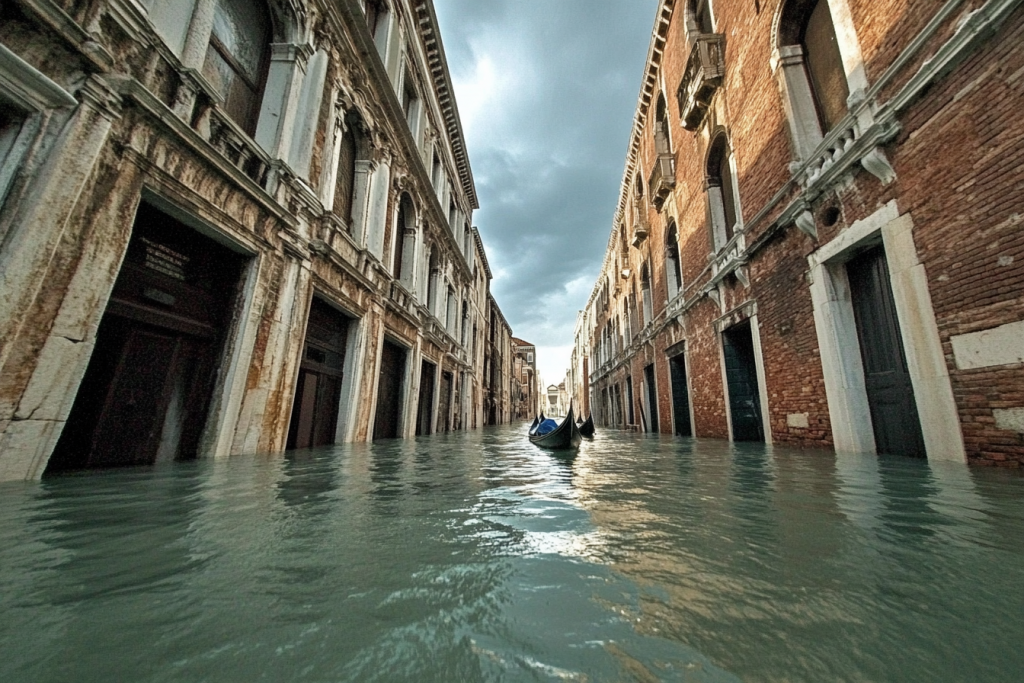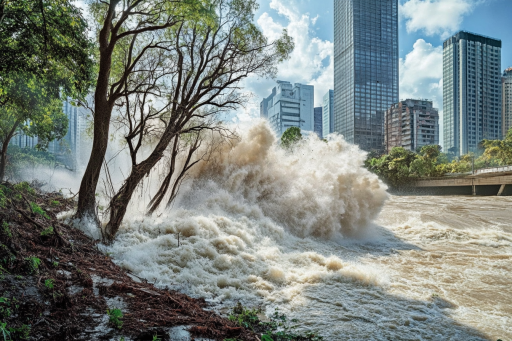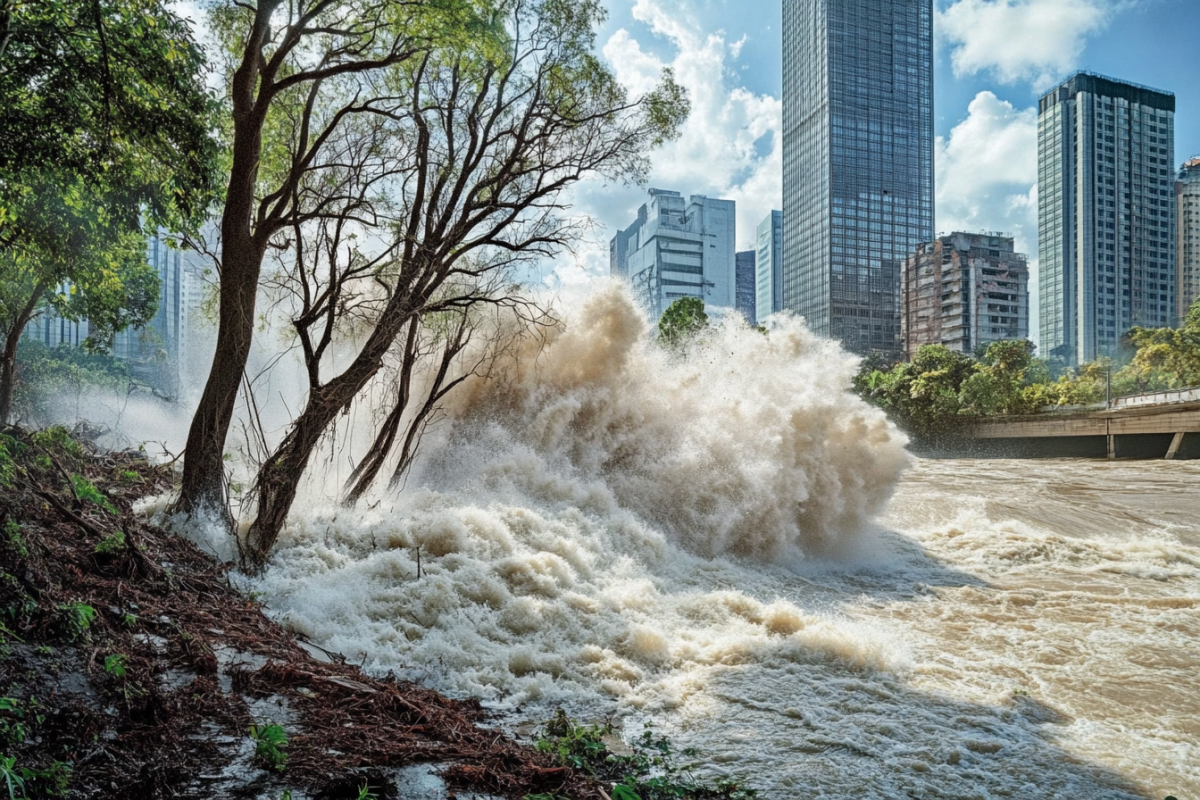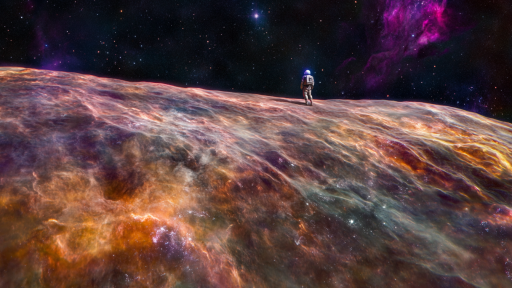
Humans have reshaped landscapes, altered climates, and pushed nature to its limits—but Earth isn’t a passive observer. From reclaiming abandoned cities to unleashing extreme weather, the planet has surprising ways of resisting human influence. Some responses are slow and steady, while others are swift and devastating, serving as a reminder that nature still holds the upper hand. Whether through biological adaptations, geological shifts, or atmospheric changes, Earth has its own ways of fighting back.
Ghost Forests – When Rising Seas Drown Trees

Rising sea levels and encroaching saltwater are transforming thriving forests into eerie, skeletal wastelands known as ghost forests. As saltwater infiltrates the soil, trees die from dehydration, leaving behind a haunting landscape of barren, bleached trunks. These ghost forests are expanding rapidly along coastlines, a silent warning of Earth’s changing climate. What once stood as vibrant ecosystems are now monuments to nature’s struggle against rising tides.
Venice Is Sinking—And Earth Won’t Stop It

The iconic city of Venice is slowly being swallowed by the sea as the land beneath it sinks and tides rise higher each year. Efforts to save the city with flood barriers and engineering projects struggle against Earth’s unstoppable forces. Meanwhile, nature reclaims its space as floodwaters breach historic buildings, turning streets into canals even outside of storm season. Venice’s fate may already be sealed, showing that even human ingenuity can’t always outmatch nature’s persistence.
Chernobyl’s Wildlife Thrives Without Humans

After the Chernobyl disaster forced human evacuation, nature quickly took over, transforming the abandoned exclusion zone into a thriving wildlife sanctuary. Wolves, lynxes, and even endangered species now roam freely in an environment once thought to be uninhabitable. Despite lingering radiation, ecosystems have flourished in the absence of human interference. Chernobyl stands as proof that when people step away, nature finds a way to heal and adapt.
The Sahara Desert Is Expanding—Pushing Back Civilization

The relentless expansion of the Sahara Desert is swallowing farmland and villages at an alarming rate, forcing people to flee as sand buries entire communities. Droughts and shifting wind patterns accelerate desertification, making once-fertile lands uninhabitable. While humans fight to slow the desert’s spread, Earth’s shifting climate continues to reclaim territory. The sands move forward, an unstoppable tide of nature reclaiming the land.
The Oceans Are Creating New Islands

While rising seas threaten to submerge land, the Earth counterbalances by forming new islands from volcanic eruptions and shifting tectonic plates. In the Pacific, islands have emerged seemingly overnight, built from magma and ash. Though unstable at first, these newborn lands gradually develop ecosystems, proving that the planet is constantly reshaping itself. As humans struggle to keep coastlines from disappearing, Earth is busy making new ones.
Hurricane Alley – Storms Are Growing More Destructive

The frequency and intensity of hurricanes are increasing, devastating coastal cities that once stood resilient against nature’s wrath. Warmer ocean temperatures fuel stronger storms, turning what used to be rare disasters into regular occurrences. Cities rebuild, only to be struck again as Earth reminds us who is truly in control. As storms grow in strength, nature continues to push back against human development.
The Amazon Fights Deforestation with Fire and Regrowth

Despite massive deforestation, the Amazon rainforest has its own way of reclaiming lost ground. Natural fires, unexpected regrowth, and resilient plant life allow the forest to push back, swallowing abandoned clear-cut areas in greenery once more. While deforestation is a dire threat, the rainforest’s ability to regenerate reveals Earth’s powerful resilience. Left alone, nature can undo even the most damaging human actions.
Earthquakes and Tsunamis Reshape the World Overnight

With little warning, Earth can unleash devastating earthquakes and tsunamis that wipe entire cities off the map. Tectonic plates shift, and within moments, landscapes are forever changed. What takes humans centuries to build, nature can destroy in minutes—then rebuild in its own way. These sudden, violent events serve as a reminder that no amount of engineering can fully control the forces beneath our feet.
Nature Always Reclaims Abandoned Cities

Left unchecked, nature wastes no time in overtaking abandoned cities. Once-thriving streets become forests, and buildings crumble under the weight of vines and trees. From Pripyat to Angkor Wat, the ruins of human civilization disappear into the wilderness. No matter how permanent a city may seem, nature proves it has the final say.
The Permafrost Awakens – Releasing Ancient Threats

As the planet warms, the once-frozen permafrost in the Arctic is thawing at an alarming rate, releasing ancient viruses and bacteria that have been trapped for thousands of years. Scientists have already discovered prehistoric microbes awakening from the ice—some of which could pose unknown risks to modern ecosystems. Alongside this microbial threat, methane stored in the permafrost is being released, accelerating climate change even further. Earth’s frozen vault is opening, and what lies within could reshape the future.
Rogue Rivers – When Water Changes Its Own Course

Rivers have carved landscapes for millennia, but sometimes, they defy human control by suddenly shifting course. Known as avulsions, these rapid river changes can flood cities, drown farmland, and turn dry regions into wetlands overnight. Entire civilizations have been disrupted by rivers deciding to flow elsewhere, proving that water follows its own rules. While dams and levees attempt to control these changes, nature always finds a way to reclaim its path.
Who Is Really in Control?

For all of humanity’s advancements, the planet constantly reminds us that we are only temporary guests. From storms to shifting landscapes, Earth has countless ways of reclaiming what has been altered. Some changes happen over centuries, while others take place in an instant, reshaping the world without warning. No matter how much we build, nature will always have the power to take it back.





